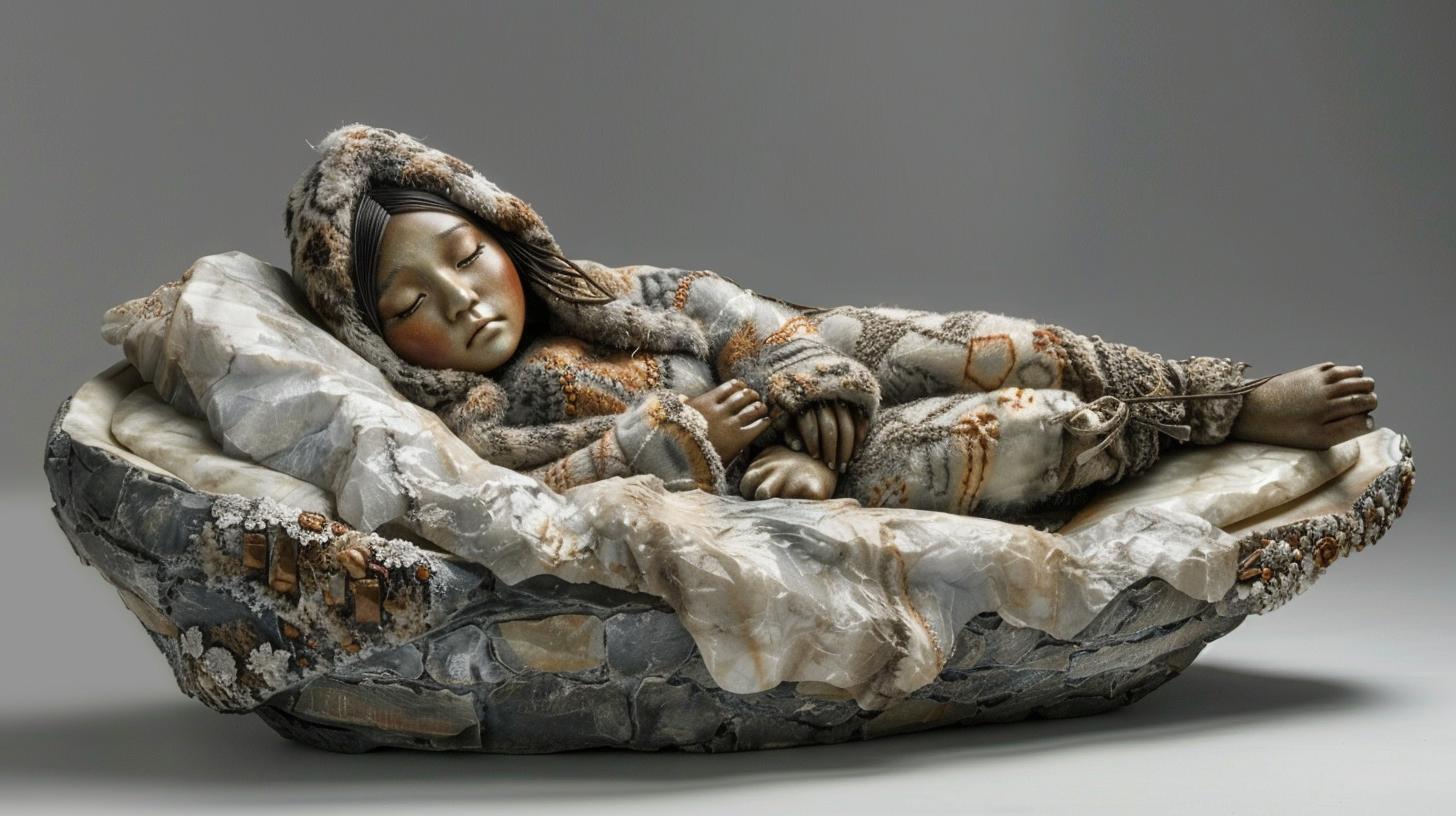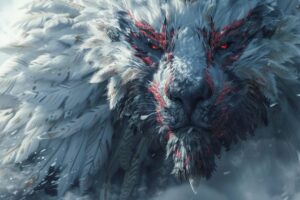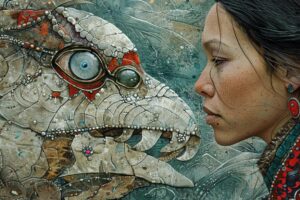Pukkeenegak: The Inuit Goddess of Children and Clothing

Pukkeenegak is a benevolent goddess in Inuit mythology, revered for her roles in childbirth, providing food, and clothing. She oversees domestic tasks, guides pregnant women, and is honored in community festivals.
Followers seek her blessings through rituals and symbolism, aiming to attain harmony and stability. Pukkeenegak’s influence is deeply ingrained in Inuit society, shaping traditions and practices related to family and household duties.
Overview of Pukkeenegak in Inuit Mythology
Pukkeenegak, a prominent figure in Inuit mythology, holds significant roles and attributes that shape her perception within the culture.
Role as Goddess of Children and Pregnancy
- Responsible for overseeing the well-being of children and guiding women through the journey of pregnancy.
- Ensures the safety and health of both mother and child during the process of childbirth.
Responsibilities in Providing Food and Clothing
- Facilitates the provision of essential resources such as food and clothing to support the community.
- Ensures that women have the necessary materials for the creation of garments and sustenance.
Representation and Attributes
- Often depicted with facial tattoos and wearing distinctive high boots, symbolizing her unique identity.
- Embodies qualities of compassion, protection, and guidance towards those under her care.
Pukkeenegak’s Influence in Inuit Society
Managing Domestic Tasks and Community Activities
Pukkeenegak plays a central role in managing domestic tasks and community activities within Inuit society.
She oversees the day-to-day responsibilities of the household, ensuring that tasks are carried out efficiently and effectively. From sewing to cooking, her influence extends to all aspects of daily life, fostering a sense of unity and collaboration among community members.
Protection and Guidance for Pregnant Women
One of Pukkeenegak’s key roles is to provide protection and guidance to pregnant women. She watches over expectant mothers, offering support and assistance throughout the various stages of pregnancy. Her presence brings comfort and reassurance to those preparing to bring new life into the world, instilling a sense of security and well-being.
Festivals and Celebrations in Honor of Pukkeenegak
Inuit communities come together to celebrate Pukkeenegak through festivals and special events that honor her benevolent presence. These festive occasions serve as a time for reflection, gratitude, and merriment, as individuals gather to pay tribute to the goddess of children and clothing.
Through ceremonies and rituals, her influence is acknowledged and celebrated, reinforcing the cultural significance of her role in Inuit society.
Invoking Pukkeenegak’s Energy
Rituals and Practices for Seeking Pukkeenegak’s Blessings
Engaging in rituals and practices serves as a way to seek the blessings of Pukkeenegak. Inuit tradition emphasizes the importance of honoring the deity through various actions and ceremonies, reinforcing the connection between the worshippers and the divine presence.
Symbolism and Meaning of Drawing Pukkeenegak’s Emblem
The act of drawing Pukkeenegak’s emblem holds significant symbolism and meaning within Inuit culture. It signifies a spiritual connection with the goddess, symbolizing the desire for protection, guidance, and abundance in various aspects of life.
Connecting with Pukkeenegak for Harmony and Stability
Establishing a connection with Pukkeenegak fosters a sense of harmony and stability in the lives of her devotees. Through prayers, meditations, and symbolic gestures, individuals seek to align themselves with the divine energy of the goddess, promoting balance and well-being.
.









